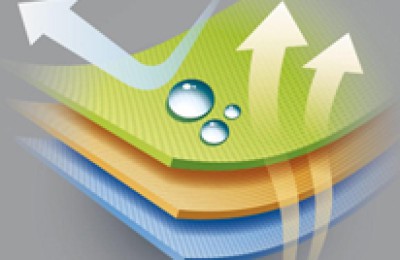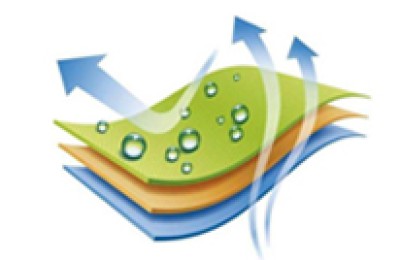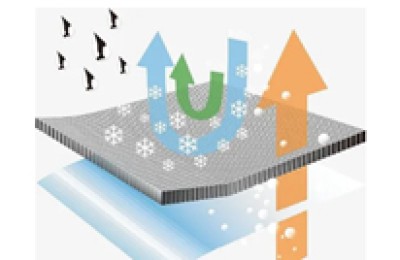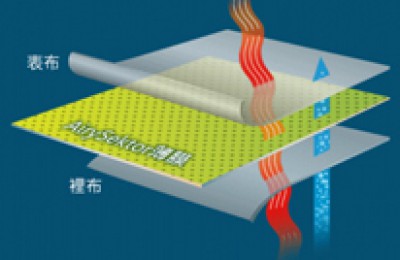After the domestic textile and garment processing links were partially transferred to Vietnam, Cambodia and other countries, they encountered a rapid increase in local labor costs. Domestic experts represented by Professor Lin Yifu believe that the African continent, which has abundant young labor resources and low prices, is the final destination for the transfer of labor-intensive industries.
Does Africa have the potential to take over China’s textile and apparel industry? In order to seek answers, the China National Textile and Apparel Council, led by Vice President Gao Yong, organized a total of 14 representatives from some domestic industry associations and key enterprises to go to Ethiopia in April this year to conduct special investment research in the textile and garment industry.
During their stay in Egypt, the delegation held individual or joint working talks with the Ethiopian Prime Minister’s Office, Ministry of Industry, Ministry of Agriculture, Investment Committee, Textile Development Agency and Ethiopian Textile and Garment Producers Association. In addition, the delegation also visited the Oriental Industrial Park invested by Chinese private enterprises and the BoleLemi Industrial Park invested by the Ethiopian government, and visited Ayka Addis, a textile and garment enterprise invested by the Turkish Ayka Group, and some Korean-owned enterprises.
Through talks and exchanges with various Ethiopian government departments and on-site inspections of industrial parks and enterprises, the delegation gained a comprehensive understanding of Ethiopia’s investment environment and various incentive policies to attract foreign investment, and gained an understanding of Ethiopia’s huge potential to develop the textile and garment industry. Basically hold a positive view.
Ethiopia’s textile and apparel industry is still in its infancy. There are currently less than 100 textile and garment companies in Ethiopia, with small and medium-sized enterprises accounting for the vast majority. Textile and apparel exports in fiscal year 2012-2013 were US$99 million. The yarn production capacity in 2013 was 370,000 tons and 80 million pieces of garments. Objectively speaking, Ethiopia is still in a relatively marginal position in the world’s textile and apparel supply chain.
1. Advantages and potential of Ethiopia’s development of textile and garment industry
1. Ethiopia has a relatively stable political and economic environment, and the political risk of investment is relatively small. The EPR Front currently in power in Ethiopia has a strong ruling foundation in the country and the society is relatively stable. The ruling party and the central government have long been committed to economic development and poverty eradication. Since 2003, Ethiopia has maintained nearly double-digit GDP growth for more than ten years, maintained a good macroeconomic development trend, has an ambitious five-year GTP plan, and has relatively standardized investment-related laws. Ethiopia and China enjoy good political relations, increasing economic and trade cooperation, and have signed a bilateral investment protection agreement. Overall, investment in Ethiopia has relatively low political risks and is conducive to long-term investment.
2. The central government regards textiles and clothing as a priority development industry. The development strategy of relying on special industrial parks and focusing on various incentive policies is conducive to the establishment of export-oriented industries. In talks with the Prime Minister’s Advisor, the Ministry of Industry and the Ministry of Foreign Affairs, senior Egyptian officials stated that the textile and garment industry is one of the most important industries for Ethiopia’s industrialization, and they hope to attract outstanding large-scale Chinese textile and garment enterprises to invest in Ethiopia, and the Ethiopian government will The five important textile and garment provinces in China, Jiangsu, Zhejiang, Guangdong, Fujian and Shandong, are the key investment areas. Ethiopia is currently learning from China’s vigorous development of industrial parks, and provides land, various taxes (corporate income tax, consumption tax, property tax, business tax, etc.), duty-free import of machinery and raw materials, and “one-stop” services to export-oriented enterprises that move in. and many other preferential incentive policies. In particular, the Ethiopian government has cooperated with the American company PVH to build a textile industrial park in Hawasa that will be initially completed in December this year. PVH will transfer some purchase orders to Ethiopia. Members of the delegation were very interested in Hawasa’s industrial park project.
3. Ethiopia has abundant labor resources, high quality and low cost. Ethiopia’s current population has exceeded 90 million people, and its population structure is very young. The Ethiopian government attaches great importance to basic and higher education, so the quality of its labor force is higher than that of many other African countries. According to Turkish investment company Ayka Addis, the current monthly salary of an ordinary garment worker is 900 birr, equivalent to less than 300 yuan. The labor cost has obvious advantages over China and Southeast Asian countries.
4. Ethiopia has sufficient water energy resources and low electricity prices. Ethiopia has unique advantages in hydropower energy development in Africa. The Renaissance Dam under construction will have an annual power generation capacity of 6 million kilowatts, and the country’s annual power generation capacity will soon reach 8 million kilowatts. Low-cost hydropower brings huge cost advantages to industrial development. It is understood that the current electricity price in Ethiopia can be as low as 3 cents per degree, which is very attractive to sectors such as cotton spinning that consume huge amounts of electricity.
5. Ethiopia has huge potential for cotton planting and the possibility of developing a full textile industry chain from cotton to clothing. Ethiopia’s current lint production is only about 70,000 tons per year, but the country’s land area for cotton cultivation is as high as 3 million hectares. The current utilization rate is less than 10%, and the potential is huge. If Ethiopia’s cotton planting and production can enter a virtuous cycle together with the cotton spinning industry, its resource and cost advantages can be fully utilized. In addition, Ethiopia is also rich in wool and hemp raw material resources.
6. As one of the least developed countries, Ethiopia enjoys a preferential trade policy of zero tariffs and zero quotas for exports to the United States and Europe. There is a high chance that the AGOA bill in the United States will be extended for more than 10 years this year, and the EU’s EBA access will not be canceled in the short term. At the same time, since Ethiopia is a member of the “Common Market for Eastern and Southern Africa”, goods produced by enterprises investing in Ethiopia can also be exported to the common market at preferential tariffs.23 African countries with a population of �300 million.
7. Ethiopia’s infrastructure is improving, and Ethiopian Airlines’ China routes are operating well. Members of this delegation are very concerned about Ethiopia’s export infrastructure issues. Ethiopia has no port, and goods basically need to enter and exit through the Port of Djibouti. It is understood that the railway from the capital to Djibouti will be officially completed and opened to traffic by the end of this year, greatly improving the efficiency of cargo transportation. At the same time, the Ethiopian government highly emphasizes Ethiopian Airlines’ leading position in Africa and its advantages of daily direct flights to cities such as Shanghai and Beijing in China.
In addition, the Ethiopian National Development Bank also provides financing support for no more than 70% of the investment in the textile and garment industry, with preferential interest rates as low as 8.5%. If inflation and currency depreciation are taken into account, local loans are very suitable.
2. Practical problems and challenges in developing the textile and garment industry in Ethiopia
1. The problem of industrial mismatch is prominent. The textile and apparel industry is a highly connected industrial chain, and well-run upstream and downstream industrial supporting facilities are critical to efficient and high-quality project production. At present, the fabrics and accessories needed by Ethiopian garment companies basically need to be imported, which will cause a long manufacturing cycle and cannot meet the strict rapid response orders. The same problem exists for fabric companies. The quantity and quality of yarn in Ethiopia cannot be guaranteed.
2. Logistics costs remain high. According to the delegation’s understanding, Ethiopia’s domestic road and railway transportation has not yet undergone market-oriented reforms, and state-owned enterprises are inefficient and expensive. According to Ayka, shipping a container from its factory to the Djibouti port costs more than $3,000. The high cost problem of logistics is not expected to be effectively solved in the short term.
3. Improving workers’ labor productivity is a long-term challenge. According to research conducted in the Oriental Industrial Park and Turkey’s Ayka Group, compared with the world’s mainstream manufacturing countries, the labor productivity of Ethiopian workers is still at a low level. As one of the best local textile companies, Ayka has invested in first-class textile equipment and there is room to increase output.
It is worth mentioning that during this visit, we also learned that Chinese investment companies in Ethiopia also have operational difficulties due to insufficient understanding of investment laws and policies. This also reminds companies investing in Ethiopia to fully understand local laws during due diligence and not to sign preferential terms that exceed legal provisions.
Ethiopia – a country with potential for cross-border layout of the textile and apparel industry?
After the domestic textile and garment processing links were partially transferred to Vietnam, Cambodia and other countries, they encountered a rapid increase in local labor costs. Domestic experts represented …
This article is from the Internet, does not represent Composite Fabric,bonded Fabric,Lamination Fabric position, reproduced please specify the source.https://www.yjtextile.com/archives/12226





